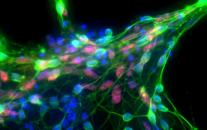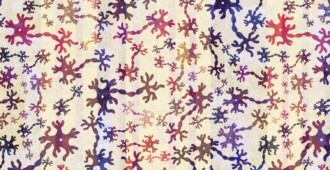Our bodies need to be able to make new proteins, to maintain long term memory. So if the ability to make new proteins is switched off, does this cause Alzheimer’s Disease? New research findings published yesterday by scientists based in Leicester take us closer to answering this question. Journalist are describing this as a step forward for all neurodegenerative disease, so I wanted to explain what the researchers found, and what it might mean for MND.
What’s the story?
The activated form of a chemical called ‘eIF2’, is found in higher levels than normal in the brains of Alzheimer’s Disease patients. (In it’s turn, eIF2 is activated by an enzyme called PERK – hence the name of the blog post.. !).
Last month (September 2013) researchers found that genetically blocking the activation eIF2 prevented memory problems in a mouse model of Alzheimer’s Disease. The research published yesterday showed that in a mouse model of prion disease, chemically blocking eIF2 (as opposed to genetically blocking it) helped prevent the development of prion disease (Variant CJD or ‘mad cow disease’ is an example of a prion disease).
The chemical block was given to mice orally (one of way of doing this is to give it to them in their food). It got to the brain OK and effectively blocked eIF2, but the chemical did have serious side effects. So it’s a possible turning point for drug treatment for Alzheimer’s Disease and prion disease, but not the answer.

How do eIF2 and PERK work?
PERK and eIF2 are parts of a larger piece of machinery in the cell known as the ‘unfolded protein response’ or UPR. MND researchers are familiar with the UPR, due to its role in clearing away accumulated proteins from within motor neurones.
The UPR is a perhaps the ‘tsar’ of accumulated proteins. It works in two ways to stop the situation getting any worse: firstly, it prevents the production of any further proteins and secondly it calls in a process to begin the removal and recycling of the accumulated proteins (it recruits protein chaperones – a kind of special task force).
So is the UPR a good thing or not?
As I’ve said above, a typical sign of many neurodegenerative diseases is the presence of accumulated proteins in their cells. The UPR is a way of helping to resolve the problem, so it seems paradoxical that blocking part of it might actually help prevent the disease.
However, what this group of researchers have found is that actually the UPR is a bit of a jobsworth – it’s too efficient at its job so that it blocks all new protein production. This includes essential proteins needed for the normal working of the brain.
The blocking of eIF2 works by switching back on the production of new proteins.
What does this mean for MND?
It’s hard to tell the likely implications of this research in our journey to develop a treatment for MND, as the processes involved in Alzheimer’s Disease, prion disease and MND are not identical.
An MND research paper, published several years ago, showed blocking PERK can prevent the creation of unwanted extra copies of the mutant SOD1 protein (a cause of one of the rare, inherited forms of MND). However, equally, there is evidence that a drug under development called arimoclomol works by promoting the part of the UPR that clears away proteins.
We don’t know why motor neurones die in MND, but the removal of unwanted proteins is only part of the story.
References:
Moreno et al Sci Transl Med 9 October 2013: Vol. 5, Issue 206, p. 206ra138
Ma et al, Nature Neuroscience 2013 Sep;16(9):1299-305
Wang L et al Hum Mol Genet 2011: Mar 1;20(5):1008-15. doi: 10.1093/hmg/ddq546






Comments are closed.